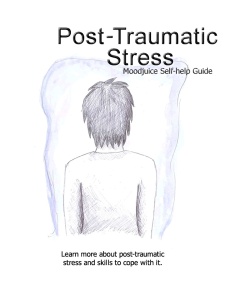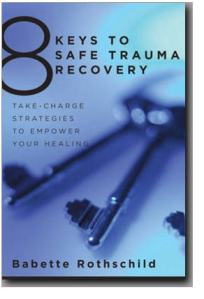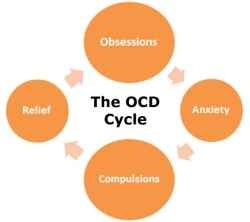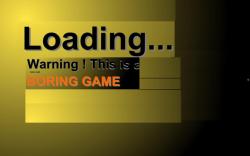This is not meant to be used for diagnostic purposes. If you think you might have PTSD it is recommended to seek professional help. PTSD is a common mental health issue, that can be treated with several methods. If the symptoms keep you from living a normal life, professional help might be needed.
What is PTSD (Post traumatic stress disorder) ?
Post-Traumatic Stress can occur after a significant incident that is out of the ordinary. A person involved in such an event might have witnessed an injury or death. You might have been in danger of this yourself. It could have been a large scale disaster, or a small but significant accident. For example:
- Being attacked or assualted
- A road traffic accident
- A house fire
- An incident at work
- A natural disaster
An initial reaction to such an event might be shock and disbelief. Over time this can fade. More troubling thoughts and feelings can emerge. These might include anger, helplessness or fear. It can be difficult to process your memories of the event, or understand what happened and why. You might re-experience the incident through intrusive flashbacks or nightmares. Following such an experience, it is also common to avoid things that remind you of the incident.

What keeps Post-Traumatic Stress going?
Following an incident you may find that avoiding the location, activity or people involved is an effective way of coping with your distressing circumstance. In the long-term this may not be helpful. Adapting your behaviour to avoid those things might maintain your difficulties, rather than resolving them by working through the problem.
When looking more closely at what stops us from overcoming Post-Traumatic Stress, it becomes clear that our behaviour, thoughts, feelings and physical sensations all interact and combine to keep it going.
Challenging unhelpful thoughts
The way that we think about things has an impact on our mood. Many of these thoughts occur outside of our control, and can be negative or unhelpful. It is therefore important to remember that they are just thoughts, without any real basis, and are not necessarily facts. Even though we may believe a lot of our unhelpful thoughts when we have experienced a traumatic event, or feel stressed or low, it is good to remember that they should be questioned as they are often based on wrong assumptions.
The following section will help you begin to recognise if you are thinking about things in an unhelpful or unrealistic way, and discuss how you can start to make changes to this. By doing so, you can learn to see things in a more realistic light which can help to improve your mood. You might have unhelpful thoughts about all kinds of things. Here are some examples:
About Yourself / Your Actions and Thoughts:
- I may not be able to cope
- I’m helpless
- I’m in danger, something might happen to me
- I am to blame
About the World
- The world is dangerous and threatening
- The world is an unpredictable place
It is clear to see how this kind of thinking might bring your mood and confidence levels down.
You might find it difficult to identify an unhelpful thought. Try thinking about a time when your mood changed, perhaps when you were thinking about a traumatic event. Consider what was running through your mind at that time.
How to challenge unhelpful thoughts
Once you have recognised an unhelpful thought the next stage is to challenge it. To do this, you can ask yourself a serious of questions. See the example below:
Situation: Taking a walk in the evening along a path.

How you feel: Fearful, on edge, worried.
Unhelpful thought: I’m going to be attacked!
Challenges to an unhelpful thought
Now you can challenge your unhelpful thoughts by asking these questions.
Is there any evidence that contradicts this thought?
- I’ve walked this way many times before.
- Lots of people walk this way.
What would you say to a friend who had this thought in a similar situation?
- Lots of people walk there, there’s no reason why you would be targeted.
What are the costs and benefits of thinking in this way?
- Costs: It makes me anxious to walk that way home, any other way is much longer. It reminds me of when I was attacked before.
- Benefits: I can’t really think of any.
How will you feel about this in 6 months time?
- I’ll probably look back and laugh about how silly I was being.
Is there another way of looking at this situation?
- I’ve walked this way so many times – it’s completely safe.
Once you have asked yourself these questions, you should read through your answers. Try to come up with a more balanced or rational view. For example:
I have walked along here plenty of times, it is no less safe than it was before I was attacked on that one occasion. I can manage these feelings of anxiety.
Try to apply these questions to the unhelpful thoughts that you notice. It can help to improve your mood. You can use this technique to test your thoughts are realistic and balanced.
Treatment of PTSD is to challenge the unhelpful thoughts and exposing oneself to the scary thoughts or situations. One can try much of this alone, but sometimes it can be even better to plan this together with somebody else, like a therapist or someone you trust. The important thing is to not escape from what scares you, and sometimes that is easier together with others.
All the worksheets for challenging thoughts can be collected from: http://www.moodjuice.scot.nhs.uk/posttrauma.asp
worksheets:


Other factors that helps people with PTSD:
-
- Social support – speaking to people; family, friends, relatives, colleagues, etc.
- Confidence – being sure of your own ability to cope.
- Problem solving – being able to work out solutions to problems.
- Self-awareness – knowing how this problem effects you; your body, thoughts, feelings and behaviours.
- Looking after yourself – making sure that you have some time to yourself. For example going for walks, having a relaxing bath, etc.

Relaxation
It is important to make time to relax and do activities that are enjoyable. This can help to improve your mood by calming the body and mind. It can also help you to sleep. Without taking the time to unwind, it is easy to feel overwhelmed and stressed.Relaxation can involve doing something that you enjoy, or just being by yourself. Good examples might be reading a book or having a bath. Exercise is also particularly effective at helping us to relax. What you do does not really matter. Try to choose something that you will look forward to and that gives you a break. Doing an activity that you enjoy will also give you less time to spend worrying. Here are a list of activities that might help you to relax.
Suggestions:
- Do some exercise (e.g. swim, cycle)
- Read a book
- Watch your favourite TV show
- Go to the cinema
- Do something creative (e.g. draw, paint)
- Visit a friend or family member
- Have a bath




















